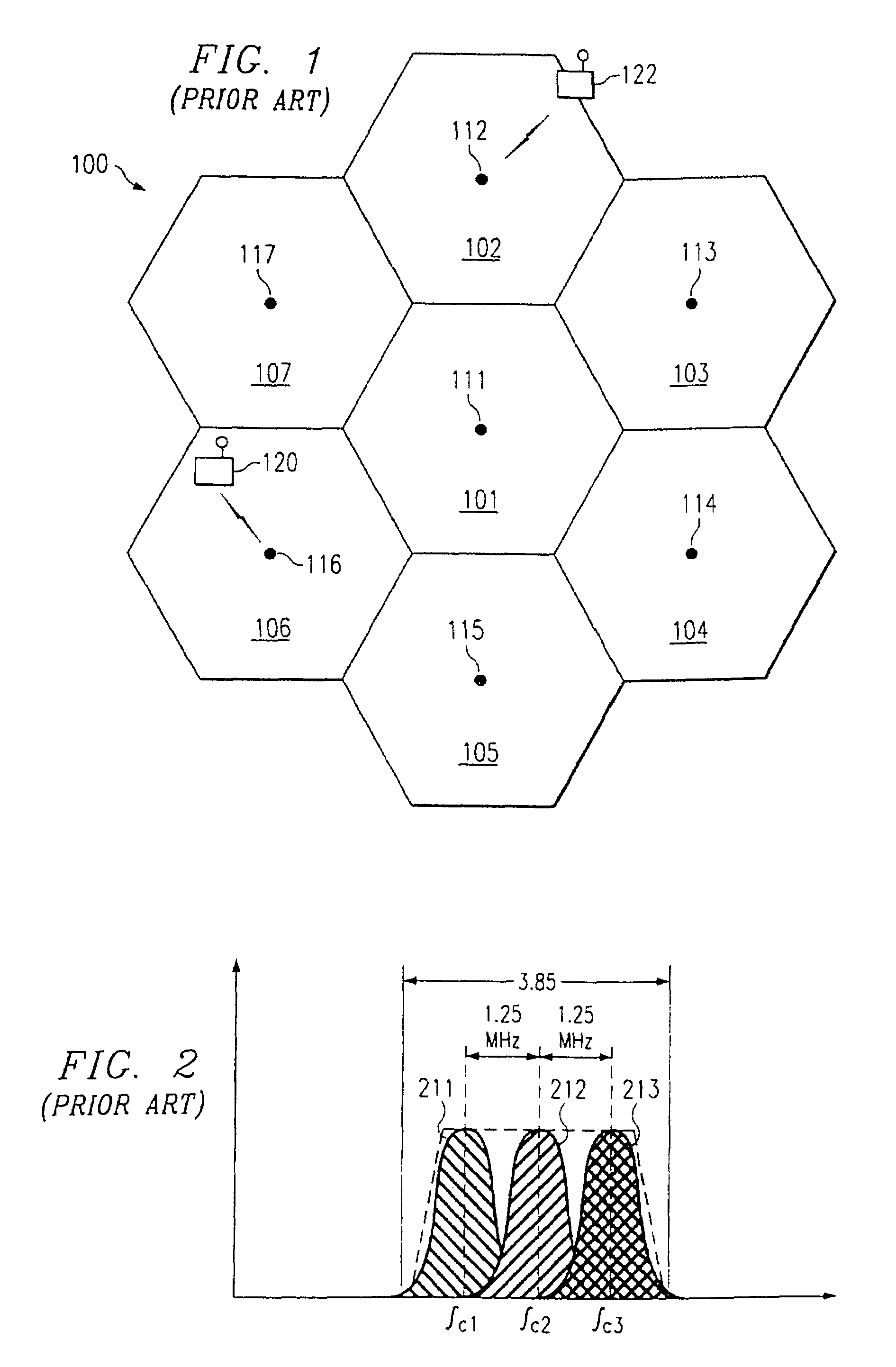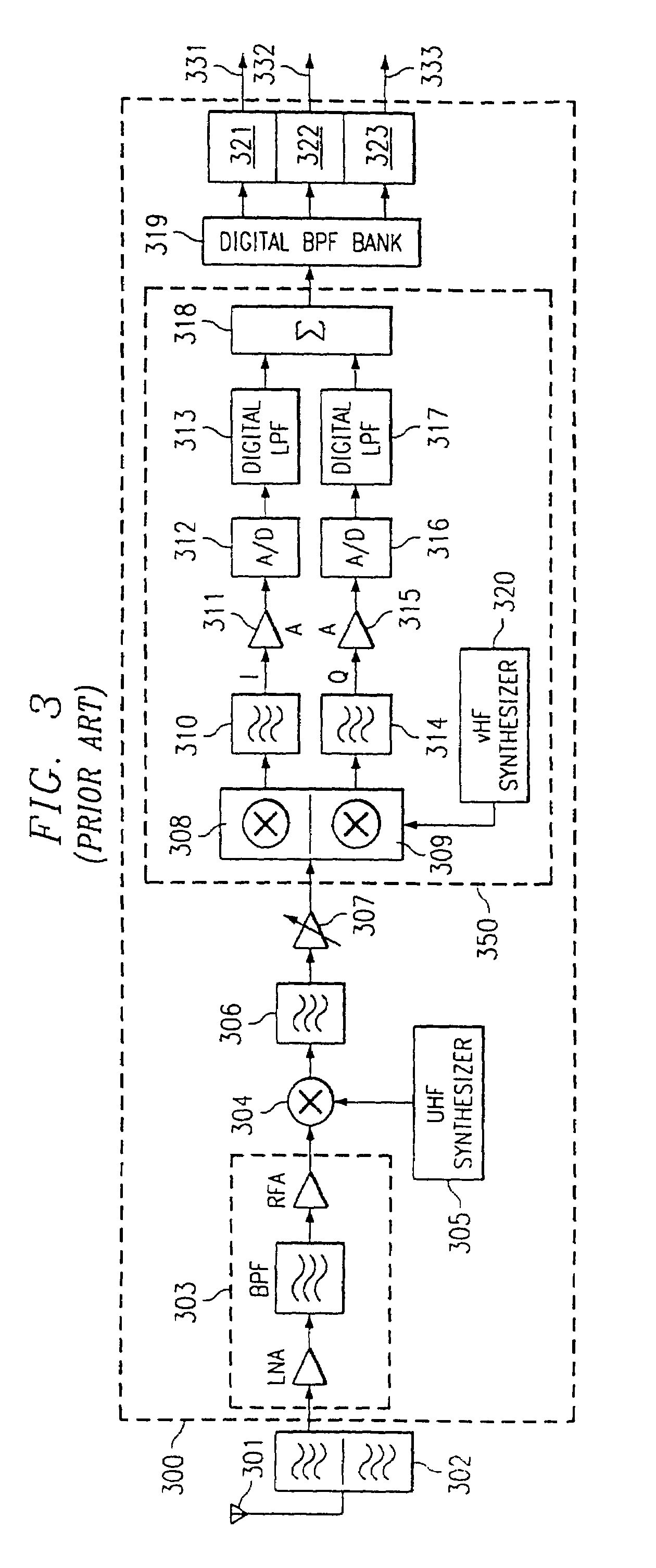CDMA receiver
a receiver and code division technology, applied in the field of cdma receivers, can solve the problems of increasing complexity, cost and/or power use of receivers, and affecting the reception of cdma signals, and achieving the effects of increasing the complexity, cost and/or power use of receivers, and increasing the complexity of information spectrum
- Summary
- Abstract
- Description
- Claims
- Application Information
AI Technical Summary
Benefits of technology
Problems solved by technology
Method used
Image
Examples
Embodiment Construction
[0032]FIG. 5 is a block diagram of multimode receiver 500 according to an embodiment of the invention. Receiver 500 may support multiple operational modes (for example, MC-CDMA and IS-95 modes). Receiver 500 supports multimode operation using a unique down-conversion mechanism that allows a wide bandwidth signal to be filtered, amplified and / or otherwise processed using common circuitry compatible with both a wide and a narrower bandwidth signal. More particularly, the receiver 500 has a single carrier mode in which the receiver 500 receives and despreads a CDMA channel transmitted in a single RF band (such as an IS-95 signal), and a multi-carrier mode in which the receiver 500 simultaneously receives and despreads multiple CDMA channels from different RF bands (e.g., bands 211-213 of FIG. 2).
[0033]An exemplary IS-95 / MC-CDMA implementation is described to further explain the operation of the receiver 500. In the description that follows, IS-95 mode refers to a single-carrier mode in...
PUM
 Login to View More
Login to View More Abstract
Description
Claims
Application Information
 Login to View More
Login to View More - R&D
- Intellectual Property
- Life Sciences
- Materials
- Tech Scout
- Unparalleled Data Quality
- Higher Quality Content
- 60% Fewer Hallucinations
Browse by: Latest US Patents, China's latest patents, Technical Efficacy Thesaurus, Application Domain, Technology Topic, Popular Technical Reports.
© 2025 PatSnap. All rights reserved.Legal|Privacy policy|Modern Slavery Act Transparency Statement|Sitemap|About US| Contact US: help@patsnap.com



